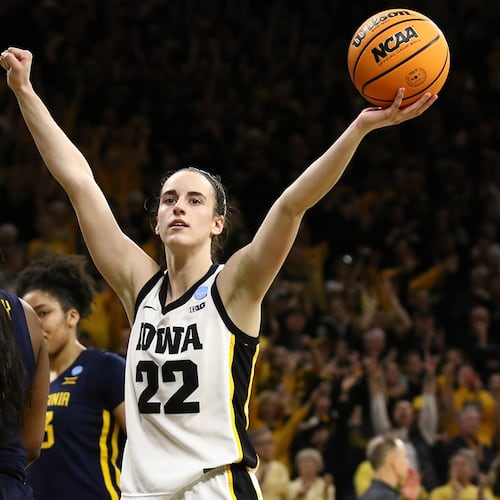In the summer of 2015, Pro Football Focus ranked the Falcons' roster the NFL's second-worst. In the summer of 2017, the same outlet ranked their roster the league's best. In 2015, the Falcons were coming off a 6-10 season that saw Mike Smith (but not Thomas Dimitroff) fired. In 2017, they were coming off a Super Bowl run.
As readers of this space know well, I find PFF’s roster rankings fascinating. The web site does, or at least attempts to do, what no other web site, or at least none offered for public consumption, does: It grades every NFL player, offensive linemen included. I could sit here and proclaim Julio Jones the league’s best receiver — spoiler alert: PFF concurs — because some things are obvious. But if you ask if Jake Matthews is the eighth- or 18th-best left tackle, I’d be at sea. I don’t study every play of every left tackle. PFF does.
PFF’s rankings, it must be said, are kind of a chicken/egg deal: The best teams invariably have the highest-ranked rosters. Is team success a function of a high-performing roster, or are rosters that achieve team success graded more highly because, um, they’re winning? (I suspect it’s a bit of both. I also suspect it doesn’t much matter.)
At any rate, pun semi-intended, the Falcons’ roster has been ranked the NFL’s 11th-best by PFF. That’s way down from last season, when it was adjudged the second-best to Philadelphia’s, which was coming off a Super Bowl victory. The biggest difference: This time last year, PFF rated 13 Falcons as “elite” or “good/high quality.” In this year’s rankings, it offers similar high marks to three. Jones and Grady Jarrett are “elite”; Matt Ryan is “high quality.” (More about that in a bit.)
PFF’s ratings are, by definition, backward-facing. They’re grades for last season, not projections for next. Last summer the Falcons were coming off a 10-6 season that coulda/shoulda been better. This time they’re coming off a 7-9 season that, if not for a closing winning streak against dubious competition, would have looked far worse. They also had a slew of guys hurt. Three defenders rated as “high quality” in 2017 — Keanu Neal, Ricardo Allen and Deion Jones — missed most of the 2018 season. They’re now rated as “average.” Desmond Trufant saw a similar downgrade; so did the since-jettisoned Robert Alford.
That shouldn’t be surprising. The Falcons’ defense sprang so many leaks there wasn’t enough caulk in all of Arthur Blank’s Home Depots to mask the damage. The same applies to running back Devonta Freeman, who was likewise injured and slipped from “high quality” last summer to “below average.” But the place that took the biggest hit, not entirely because of injury, was the offensive line.
In 2017, center Alex Mack received an 88.9 ranking, which put him close to “elite.” Last year PFF graded him at 77.4, or “average.” Matthews slipped from 80.8 to 79.8, which was just enough to trigger a difference in classification. PFF assumes the Falcons’ 2019 O-line will feature rookies Chris Lindstrom and Caleb McGary, who have no NFL rankings. Guard James Carpenter, acquired as a free agent, also is seen as a starter; his rating for 2018 — then a Jet, he was injured midway — was 56.3, which is the second-lowest on PFF’s imagined Falcons depth chart. Three guesses who’s the lowest.
That’s correct — Vic Beasley, the NFL’s eighth overall draftee in 2015 and an All-Pro in 2016. His grade for 2018 was 42.3, a number so deflated that, if doubled, it would barely shade Jarrett’s rating of 91. I’ve tracked the Falcons since 1984, and I’ve seen my share of weird career arcs. I’ve never seen one like Beasley’s. But I digress.
Falcons stats leaders
Is there predictive value in PFF’s rankings? Well, the Eagles won their Super Bowl 7-1/2 months after PFF declared theirs the NFL’s 15th-best roster. (In their first playoff game, they beat the Falcons, who’d been No. 1.) The latest Super Bowl was won by New England, which was No. 4 last summer, over the Rams, who were No. 9. The Saints, who if not for an unflagged infraction by Rams cornerback Nickell Robey-Coleman (rated “high quality,” BTW) would have graced Mercedes-Benz Stadium on Feb. 3, were No. 3. The Chiefs, who like the Saints lost their conference championship game in overtime, were No. 13.
The Patriots, Rams and Saints are 1, 2 and 3 in PFF’s latest tabulations. The point of departure between them and the Falcons — the part beyond last year’s records, we stress — is the number of players rated in the upper two tiers. The Pats have five, the Rams eight, the Saints seven. For a few years, it became boilerplate to claim the Falcons had as much top-end talent as any team. According to Pro Football Focus, they no longer do.
We say again: PFF measures; it doesn’t predict. A player who was ragingly average in one season could land in the Pro Bowl the next, and his rating would surely rise to reflect as much. And the grades for the Falcons’ defenders for 2018 must be taken with several bags of salt, given that half of them were injured. That said, the slippage in the marks for this offensive line dovetailed with the Falcons’ in-house appraisal. (You don’t spend your first two draft picks on O-lineman if you’re thrilled with your blocking.)
And maybe this was largely-if-not-entirely a product of up-front issues, but it’s worth noting PFF’s assessment of Ryan. After his MVP season, he was graded at 93.1. The next year he dipped to 88.6. Last year he merited an 84.3, which was 11th-highest among NFL quarterbacks. It has been true for a decade, and it’s still true today: The Falcons go as Matt Ryan goes. If he’s not among the league’s half-dozen best at his position, nothing good can happen here.
About the Author
The Latest
Featured


